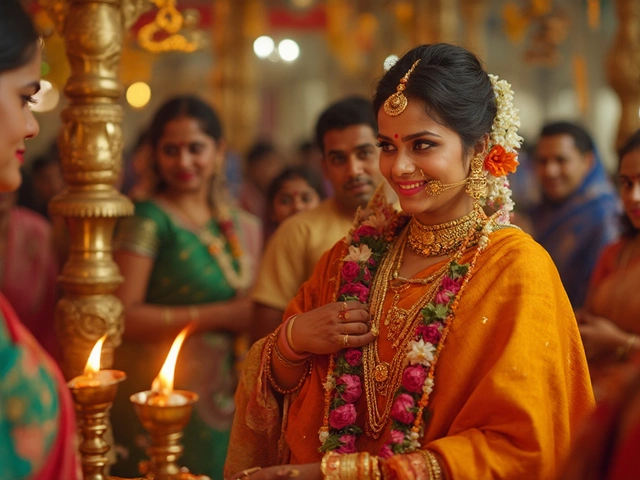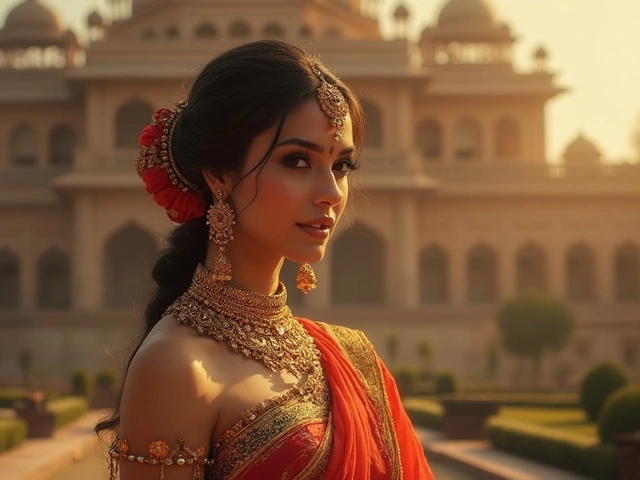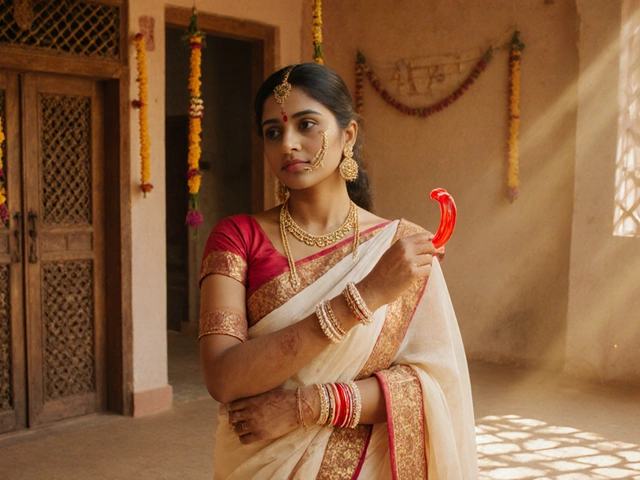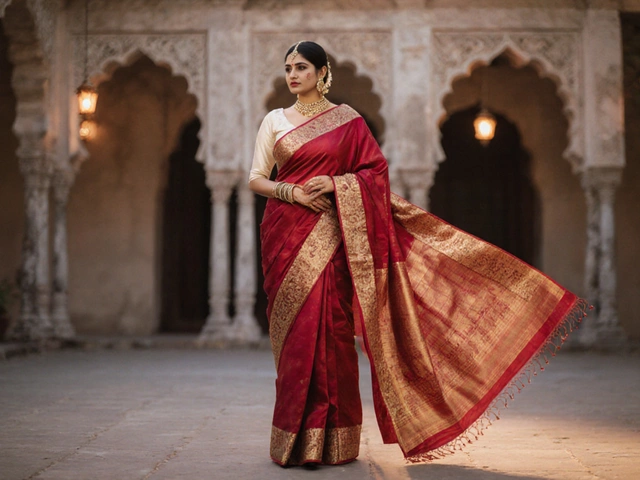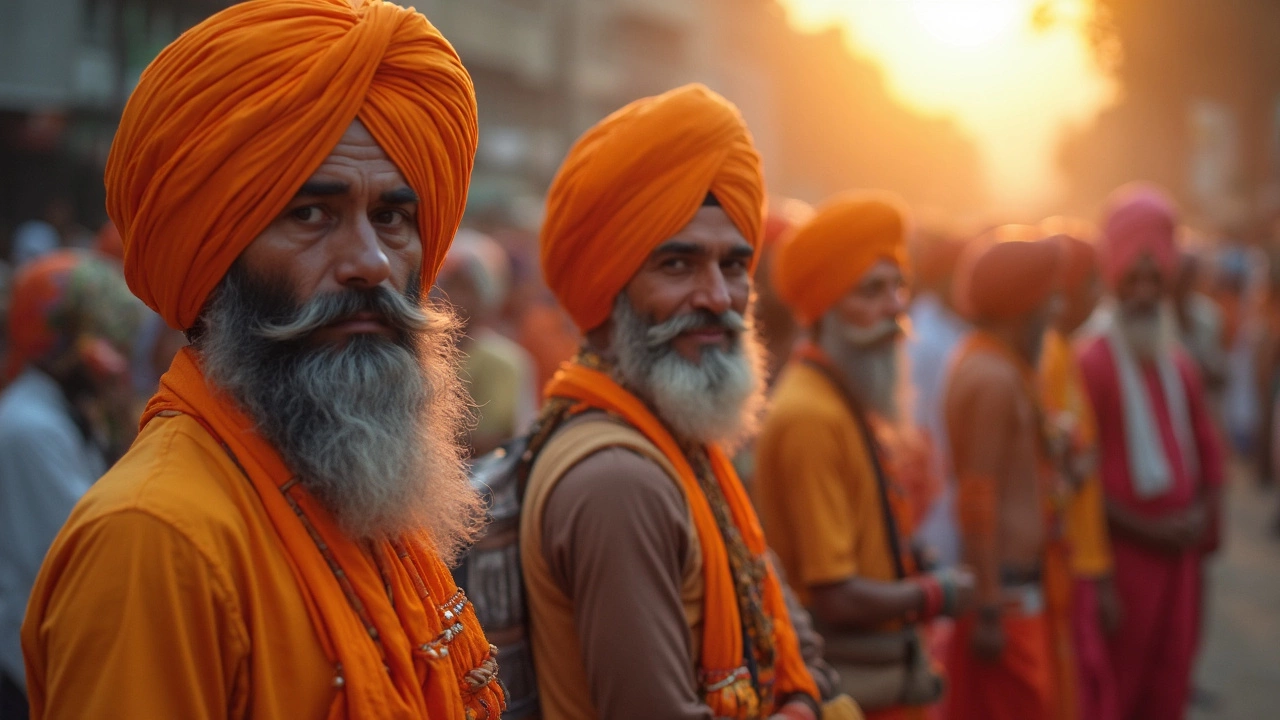
If you’ve ever seen someone wearing a sleek steel bracelet or sporting a turban, you might have wondered if there’s more going on than just personal style. For Sikhs, five special symbols—often called the Five Ks—go way beyond fashion. They’re loaded with history and meaning, and you’ll spot these all around India, especially in Sikh communities.
These symbols aren’t just for show. Each one stands for a pretty serious idea, like honesty, equality, and being ready to help others. The most visible for many is the kara, that round bracelet sometimes confused with traditional bangles but actually packed with deep religious significance. Knowing what these Five Ks are and why they matter can open your eyes to how faith shapes daily routines and culture.
Whether you’re curious about the overlap between Sikh symbols and Indian jewelry, or you just want to understand what makes these items so important, you’re in the right place. Let's break down each symbol and see how they fit into both spiritual life and everyday traditions—sometimes in surprising ways.
- What Are the Five Sikh Symbols?
- The Story Behind the Five Ks
- Breaking Down Each K: What They Mean
- Sikh Symbols and Everyday Life
- Connections with Traditional Indian Bangles
What Are the Five Sikh Symbols?
The Five Sikh Symbols, often called the Five Ks (because each one starts with the letter ‘K’ in Punjabi), are the main identity markers of Sikhism. They were introduced in 1699 by Guru Gobind Singh, the tenth Sikh Guru, as essential items every baptized Sikh (Khalsa) must keep on them. These symbols set Sikhs apart and show their commitment to Sikh values and community.
Here’s a quick list of what they are:
- Kesh – uncut hair
- Kanga – wooden comb
- Kara – steel or iron bracelet
- Kachera – special undergarment
- Kirpan – small ceremonial sword or dagger
People sometimes mix up these items with regular accessories, especially the Kara, which looks similar to traditional Indian bangles but has a different meaning. Each symbol is more than a reminder—it’s a signal of belonging, solidarity, and living by the Sikh code.
Need numbers? According to the most recent Indian census, there are over 20 million Sikhs worldwide, the majority living in Punjab, India. Most practicing Sikhs over age five wear all Five Ks daily.
| Symbol | Panjabi Name | Main Meaning |
|---|---|---|
| Kesh | ਕੇਸ਼ | Spirituality, accepting nature |
| Kanga | ਕੰਘਾ | Cleanliness, order |
| Kara | ਕੜਾ | Unity, discipline |
| Kachera | ਕਛੈਰਾ | Self-control, modesty |
| Kirpan | ਕਿਰਪਾਨ | Commitment to justice |
You don’t need to be an expert to spot these symbols—or to understand that they matter deeply. When you see someone wearing one, you’re witnessing a living tradition that’s lasted for over 300 years.
The Story Behind the Five Ks
The Five Ks didn’t just pop up by chance—they were actually introduced in 1699 by Guru Gobind Singh, the tenth Sikh Guru. He was facing troubled times: the Sikhs were facing threats and needed to stick together as a strong, united group. Guru Gobind Singh called on Sikhs to keep these five key symbols as a way to show they were serious about their beliefs, no matter what challenges came their way.
Here’s why this matters: before then, being Sikh wasn’t always obvious from someone’s appearance. The Five Ks changed that forever. These signs made Sikhs instantly recognizable and, honestly, a bit harder to mess with. The symbols were—and still are—about commitment, standing up for fairness, and reminding Sikhs to live up to their principles.
Each K has a name that starts with ‘K’ in the Punjabi language. When Guru Gobind Singh set up the Khalsa—basically a group of dedicated Sikhs—all members had to keep these symbols at all times. It wasn’t just a set of rules; it was about making sure each Sikh remembered their duty to help others, stay honest, and keep up strong moral values, all day, every day.
What’s really interesting is how practical these choices were. For example, the steel bracelet (Sikh symbols like the kara) not only reminds Sikhs to do good, but it also offered a bit of extra protection in daily life. The other Ks, like a handy comb and special undergarments, are all about discipline, hygiene, and readiness.
Today, wearing the Five Ks is still a huge deal for many Sikhs. Even when folks can blend in with the crowd, these symbols set them apart and connect them with a centuries-old story of standing up for what’s right—even when it’s tough.

Breaking Down Each K: What They Mean
The Five Ks, also called the Panj Kakke, are the five things every baptized Sikh is supposed to carry or wear. Each one starts with the letter ‘K’ in Punjabi, which makes them easy to remember. These symbols set Sikhs apart and give them a strong sense of shared identity. Here’s what each one actually means in real life:
- Kesh (uncut hair): Sikhs let their hair grow naturally—no cutting or trimming. It shows respect for how they were created and reminds them to lead a disciplined life. A turban isn’t one of the Ks, but it’s what protects the kesh. If you’ve seen photos of Sikh men with long beards and turbans, this is why.
- Kanga (wooden comb): Tucked right into the hair, usually inside the turban, the kanga keeps the hair tidy. It’s a reminder to stay organized and clean, both literally and in your daily choices. Sikhs are encouraged to keep their bodies and minds uncluttered.
- Kara (steel bracelet): Here’s where things cross into the world of traditional bangles—but the kara is different. Made from steel, it’s circular to show the idea of infinity and the oneness of God. Sikhs wear it on their dominant hand, and it’s a constant cue to act honestly and to remember their inner strength. It's the most recognized among Sikh symbols, thanks to how often you see it in daily life, even among folks who aren’t Sikh.
- Kachera (cotton shorts): They look similar to regular boxer shorts, but they’re a sign of modesty and self-control. The design is practical: easy to move in, not flashy, and strongly tied to the idea of readiness—since Sikhs are always supposed to be prepared for action, whether spiritual or physical.
- Kirpan (ceremonial sword): The kirpan is a small sword or dagger, not meant as a weapon but as a symbol of standing up for justice and protecting the weak. Sizes vary—some are big, some are tiny and worn under clothing—but the message is the same: be ready to help when needed.
Here’s a quick look at the Five Ks and their meanings:
| Name | What It Is | Represents |
|---|---|---|
| Kesh | Uncut hair | Respect for creation, discipline |
| Kanga | Wooden comb | Cleanliness, order |
| Kara | Steel bracelet | Unity, strength, honesty |
| Kachera | Cotton shorts | Modesty, discipline, readiness |
| Kirpan | Ceremonial sword | Protection, courage, justice |
Wearing or carrying these isn’t optional for baptized Sikhs—it’s a daily thing, not just during holidays. If you travel around Punjab, especially near gurdwaras (Sikh temples), you’ll spot folks wearing some or all of these Ks. It's an easy way to spot dedication, and really, a powerful visual of what the faith stands for.
Sikh Symbols and Everyday Life
It’s one thing to know the Five Ks, but it hits different when you see how these symbols show up in a Sikh’s daily routines. Each symbol—and especially the Sikh symbols as a group—reminds people of their values every single day, not just on holidays or special occasions.
The kara, for example, isn’t just a bracelet. Sikhs keep it on all the time, whether they’re at work, at school, or playing cricket in the park. The steel represents strength and unity, and because it’s circular, it stands for the eternal nature of God. You’ll never see a Sikh without it; it’s even allowed by many schools and employers in India and abroad because of its religious importance.
The kesh (uncut hair) means a Sikh never cuts or removes hair from any part of the body. This is a daily commitment. Most Sikh men tie their hair up with a turban, known as a dastaar. Women also keep their hair covered, sometimes using scarves. This isn’t a minor thing—it’s a visible, public sign of faith and identity.
Then there’s the kanga, a small wooden comb. Sikhs use it twice a day to keep their hair neat—not just for looks, but as a reminder to stay clear-headed and organized. Most keep their kanga tucked in their hair under their turban, so it’s right there all the time.
The kachera, those special shorts or undergarments, are all about self-control. They’re worn under regular clothing and remind Sikhs to stay disciplined in their actions. No one sees these on the outside, but ask any Sikh and they’ll tell you it’s part of the routine.
And finally, the kirpan. It’s a small sword—usually just a few inches long these days, and worn in a safe case—but it stands for courage and the duty to protect others. Sikhs carry their kirpan at all times, even when flying or in court, thanks to legal religious accommodations in places like the UK, Canada, and India.
There are stories everywhere about how the Five Ks help Sikhs stay grounded and ready to help. For example, the kara’s visible presence often sparks curiosity, making it a good conversation starter. Or the kirpan might remind someone to step in if they see injustice, even if it’s just sticking up for someone at school or work. For Sikhs, these aren’t just symbols—they’re tools that keep their beliefs front and center, no matter what’s on the day’s calendar.
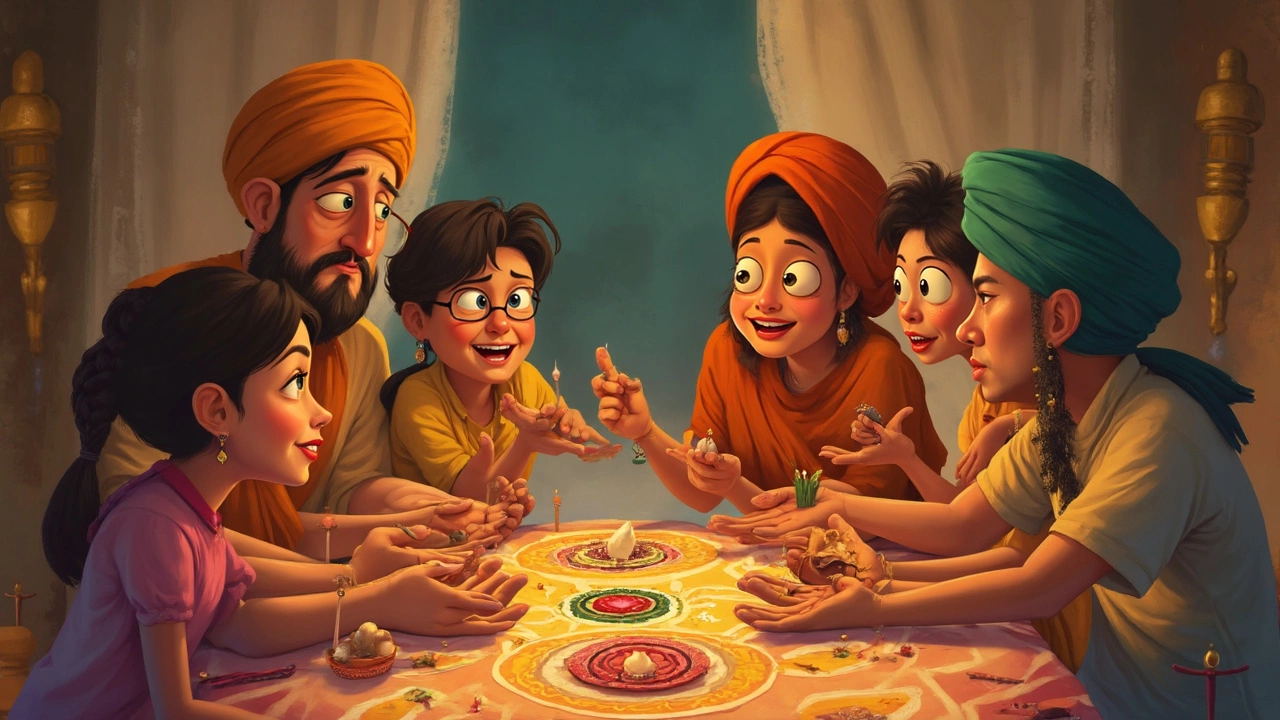
Connections with Traditional Indian Bangles
People often mix up the Sikh kara with traditional Indian bangles, but they’re not the same thing. The kara is one of the key Sikh symbols. It’s a simple steel or iron bracelet worn by Sikhs all over the world, both men and women. The point of the kara is to remind Sikhs to act well, keep good intentions, and control their actions. It’s got a solid meaning rooted in faith, not fashion.
Traditional Indian bangles, on the other hand, come in all kinds of styles, colors, and materials—glass, gold, plastic, and even silver. They’re usually worn as sets and play a big role in cultural events like weddings and festivals. In Indian weddings, especially in the north, women often wear stacks of bangles, called 'chooda,' which are bright red and white.
If you’re looking for the main differences, here you go:
- The kara is a single, unadorned iron or steel bracelet. Classic bangles can be plain or extremely decorative—sometimes covered in stones, enamel, or gold-plating.
- Sikhs always wear the kara as a symbol of faith, while bangles are usually worn for beauty or tradition.
- Kara is a practical, sturdy bracelet. Bangles, especially glass ones, are fragile and not suitable for tasks like sports or manual work.
Across India, there are areas where you’ll see Sikhs wearing both the kara and traditional bangles, especially among women during family celebrations. But ask anyone practicing Sikhism, and they’ll tell you the kara has a job: it’s a daily reminder of discipline and self-control, not just a nice accessory.
Just for comparison, check out this quick fact table showing the biggest contrasts:
| Feature | Kara (Sikh Symbol) | Traditional Indian Bangles |
|---|---|---|
| Material | Steel or iron | Glass, gold, silver, plastic, etc. |
| Meaning | Religious symbol, reminder of faith | Adornment, social status, marital status |
| Occasions | Everyday wear | Weddings, festivals, daily life |
| Design | Plain and sturdy | Decorative, colorful, sometimes delicate |
| Gender | Both men and women | Mostly women |
So if you ever get confused between a kara and a regular bangle, just look for the plain, solid bracelet—probably iron or steel, maybe a bit worn from daily use. That’s the mark of a Sikh, not just a fashion choice. And if it’s stacked with a bunch of colorful pieces, you’re probably seeing someone honoring faith and tradition at the same time.

